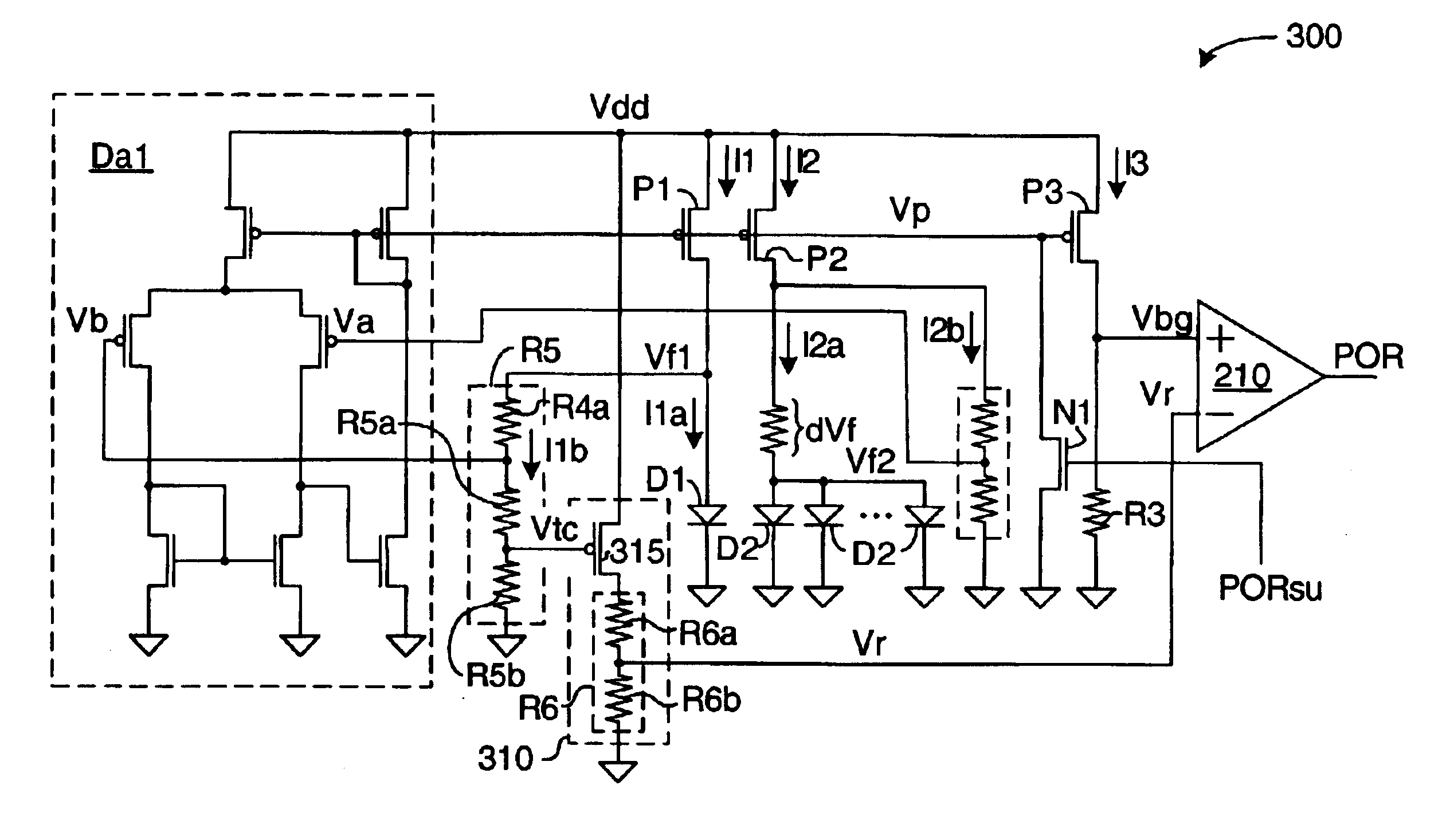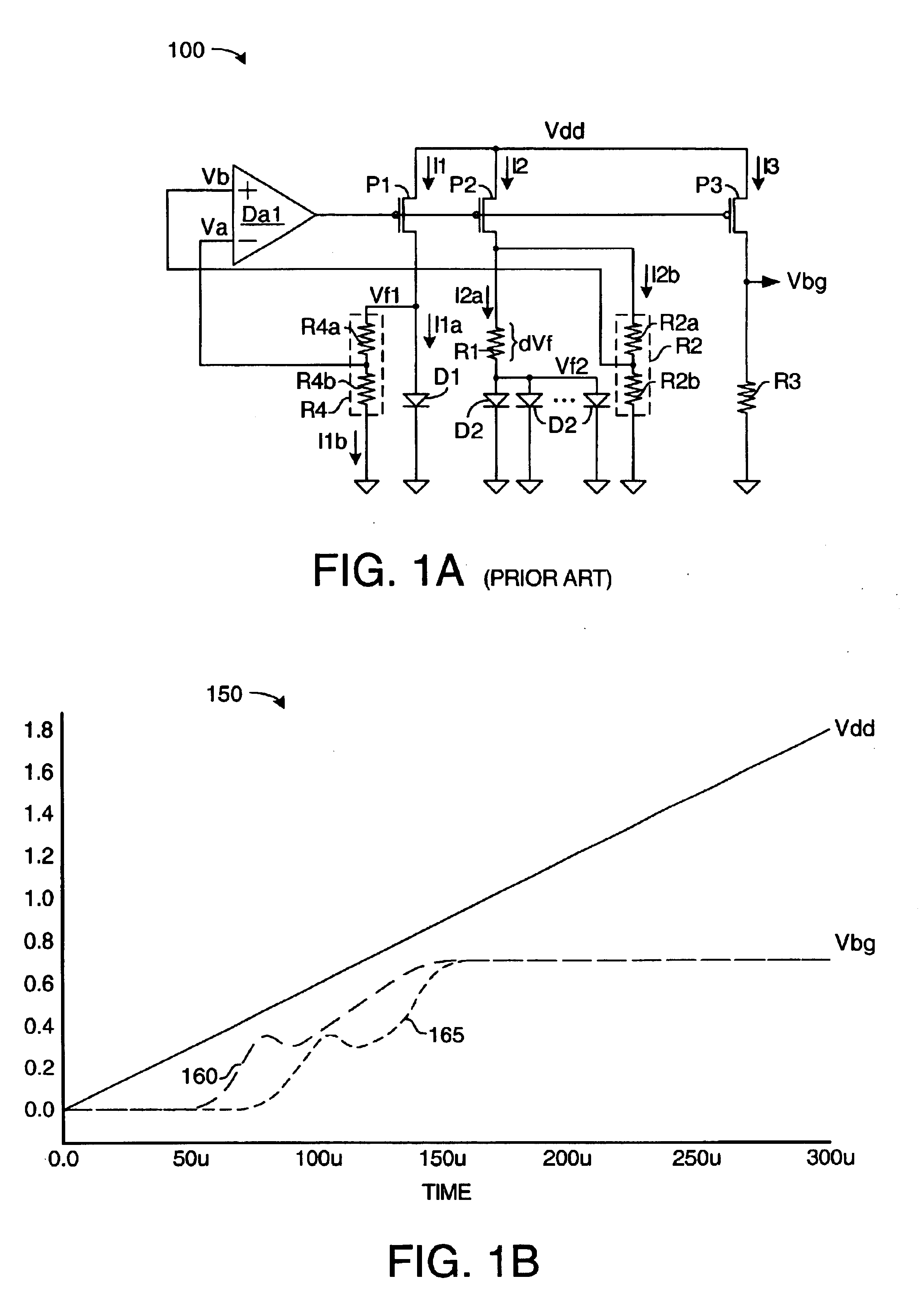Power-on-reset circuit with temperature compensation
a technology of power-on-reset circuit and temperature compensation, which is applied in the direction of pulse automatic control, electronic switching, pulse technique, etc., can solve the problems of putting downward pressure on the output voltage of bgr circuit, using ever-lower supply voltage, and impractical derive a 1.25-volt bgr voltag
- Summary
- Abstract
- Description
- Claims
- Application Information
AI Technical Summary
Benefits of technology
Problems solved by technology
Method used
Image
Examples
Embodiment Construction
FIG. 3A depicts a power-on-reset (POR) circuit 300 in accordance with one embodiment of the invention. POR circuit 300 is capable of operating at exceptionally low temperatures and operating voltages, and is relatively tolerant of process variations. As in the conventional POR circuit 200 of FIG. 2A, POR circuit 300 includes a comparator that compares a BGR signal Vbg to a second reference voltage to produce a POR signal. As detailed below, however, the second reference signal Vr in POR circuit 300 is non-linear with respect to vdd, and this nonlinearity compensates for temperature variation that might otherwise lead to undesirable windows in the POR signal.
POR circuit 300 includes many components in common with POR circuit 200 of FIG. 2, like-identified elements being the same or similar. POR circuit 300 is modified, however, to include a second reference circuit 310 that produces a temperature-compensated second reference signal Vr. Reference circuit 310 includes a PMOS transistor...
PUM
 Login to View More
Login to View More Abstract
Description
Claims
Application Information
 Login to View More
Login to View More - R&D
- Intellectual Property
- Life Sciences
- Materials
- Tech Scout
- Unparalleled Data Quality
- Higher Quality Content
- 60% Fewer Hallucinations
Browse by: Latest US Patents, China's latest patents, Technical Efficacy Thesaurus, Application Domain, Technology Topic, Popular Technical Reports.
© 2025 PatSnap. All rights reserved.Legal|Privacy policy|Modern Slavery Act Transparency Statement|Sitemap|About US| Contact US: help@patsnap.com



